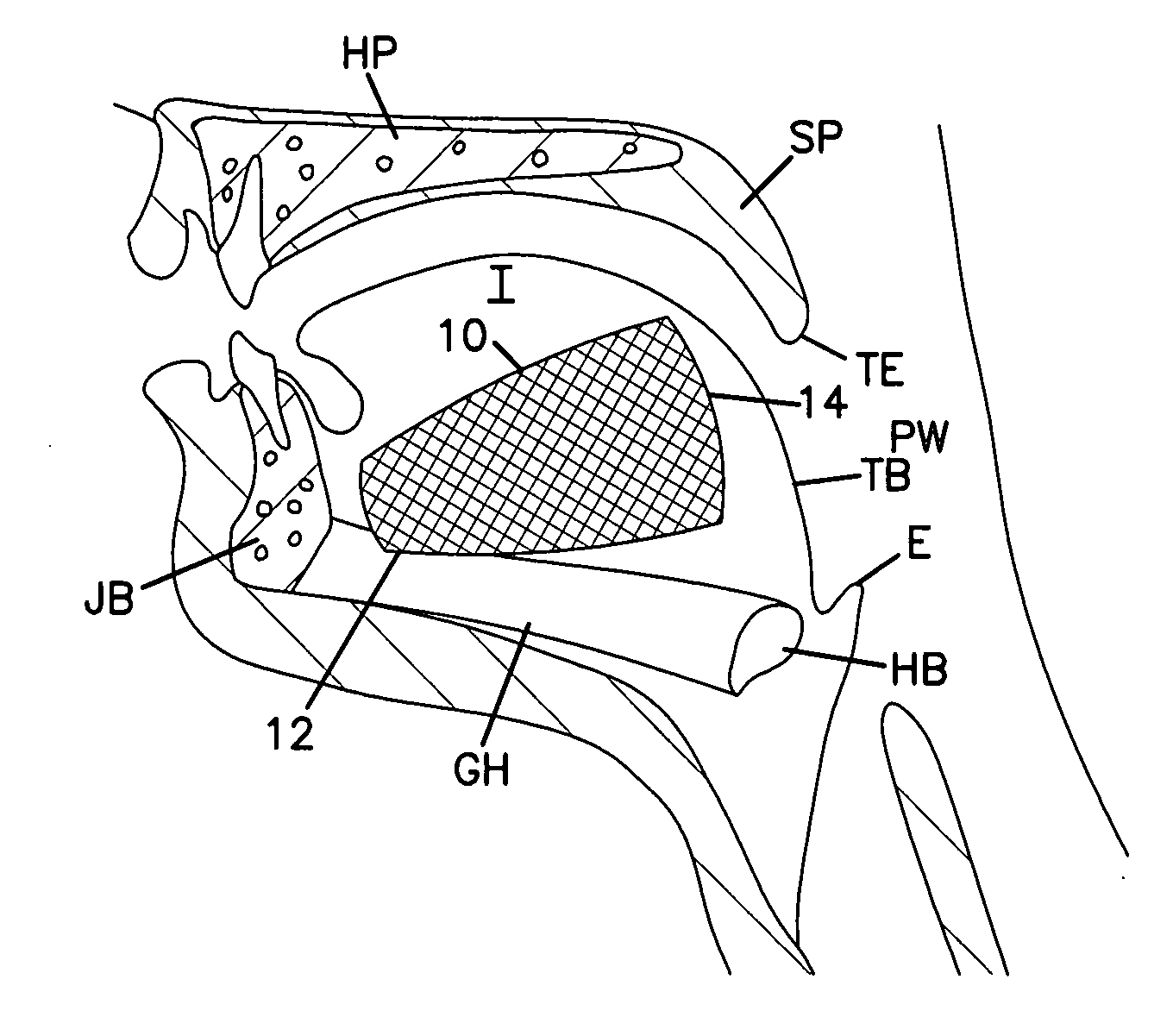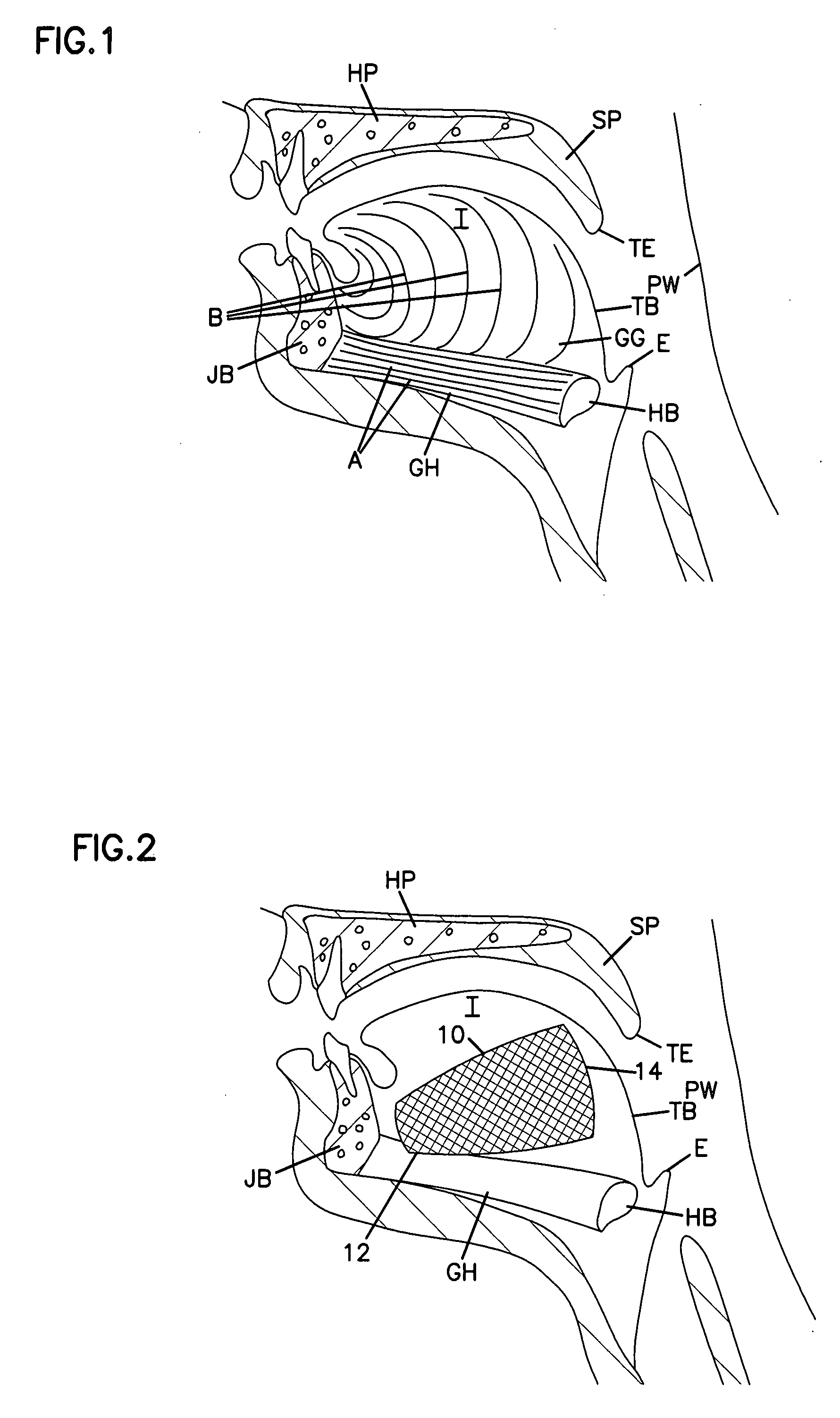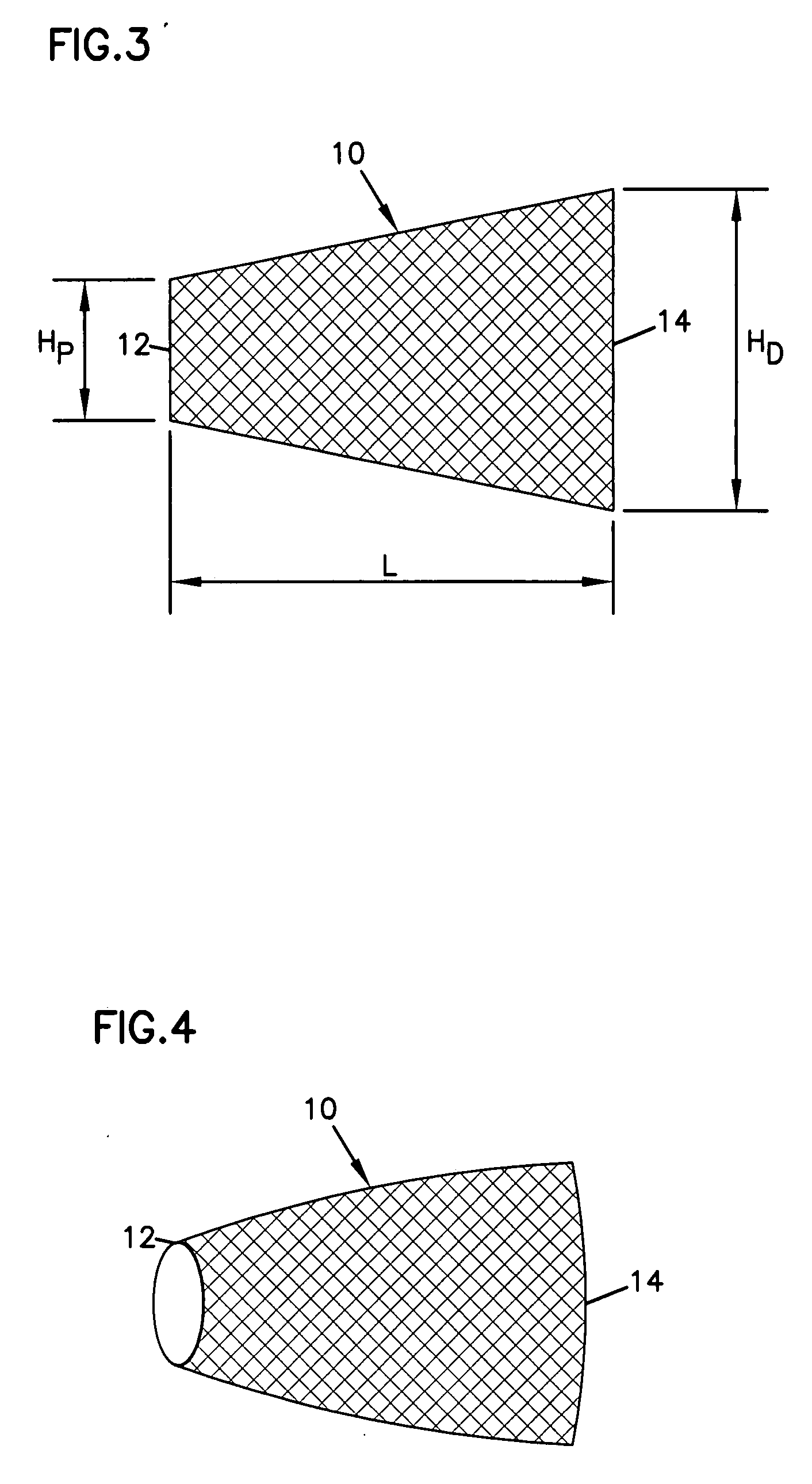Tongue implant
a technology of tongue and mouth, applied in the field of oral implant, can solve the problem of uncomfortable procedure and the lik
- Summary
- Abstract
- Description
- Claims
- Application Information
AI Technical Summary
Benefits of technology
Problems solved by technology
Method used
Image
Examples
Embodiment Construction
[0038]With reference now to the various drawing figures in which identical elements are numbered identically throughout, a description of the preferred embodiment of the present invention will now be provided.
[0039]1. Disclosure of Parent Application
[0040]FIG. 1 is a schematic representation of an upper airway of a patient. FIG. 1 shows the tongue T with a tongue base TB opposing a pharyngeal wall PW. The hard palate HP and soft palate SP reside over the top of tongue T with the soft palate SP extending rearward to a trailing end TE between the tongue base TB and the pharyngeal wall PW.
[0041]A hyoid bone HB resides near the bottom of the tongue near an epiglottis E. A mandible or jaw bone JB is at the front of the tongue T. The geniohyoid muscle GH extends between the jaw bone JB and the hyoid bone HB at the bottom of the tongue T.
[0042]The lines A of FIG. 1 illustrate the direction of muscle fibers in the geniohyoid muscle GH. The genioglossus muscle GG resides above the geniohyoid...
PUM
 Login to View More
Login to View More Abstract
Description
Claims
Application Information
 Login to View More
Login to View More - R&D
- Intellectual Property
- Life Sciences
- Materials
- Tech Scout
- Unparalleled Data Quality
- Higher Quality Content
- 60% Fewer Hallucinations
Browse by: Latest US Patents, China's latest patents, Technical Efficacy Thesaurus, Application Domain, Technology Topic, Popular Technical Reports.
© 2025 PatSnap. All rights reserved.Legal|Privacy policy|Modern Slavery Act Transparency Statement|Sitemap|About US| Contact US: help@patsnap.com



